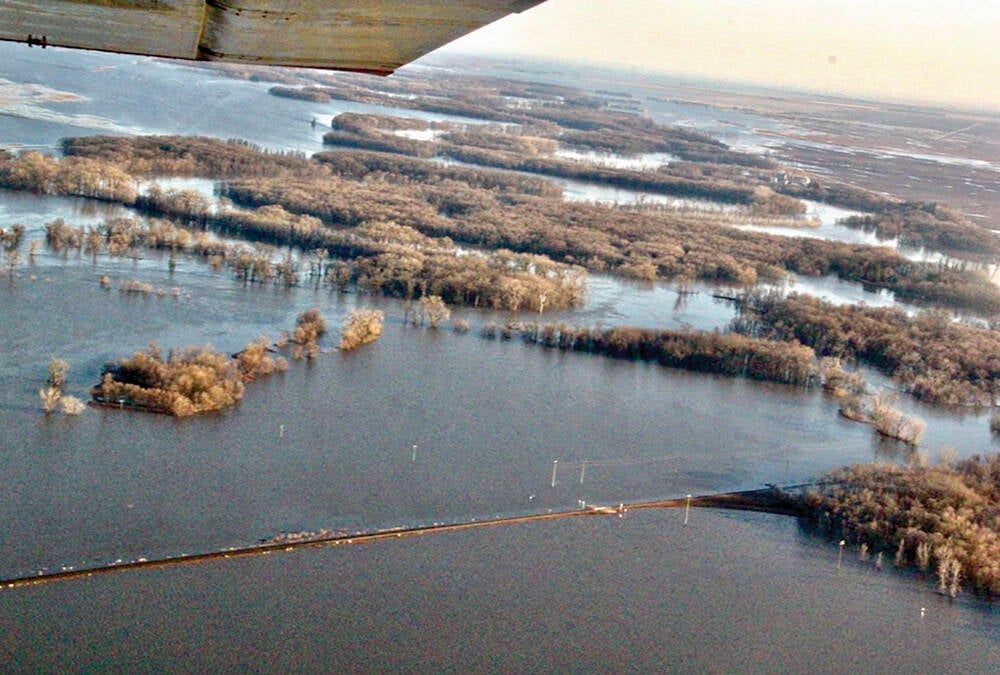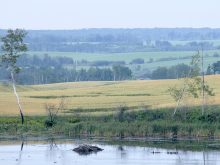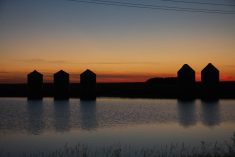hen the town of Clairmont welcomes 200 students to its new school this month, it will be a first for Alberta.
This will be the first school to open since the province decided that all new government-funded public buildings must be energy efficient.![]()
Clairmont Community School meets the Leadership in Energy and Environmental Design (LEED) silver standards, which means it follows certain construction and heating certifications.
Read Also

Rural Manitoba resources slim on natural disaster planning
A study from Brandon University’s Rural Development Institute has found that many rural and small municipalities don’t have the staff or resources to make formal climate plans against natural disaster.
Rodney Lee, deputy supervisor of the Peace Wapiti Public School Division, said planning for an energy efficient building had already started in 2006 when the province came out with its policy. Various models projecting the building’s operation show it will save 35 to 45 percent of the annual heating and power bill of a more traditional school, he said.
One LEED requirement is to recycle materials during construction. That meant visitors to the Clairmont school project didn’t find paper and insulation blowing around or wood and metal scraps lying on the ground.
Ductwork was sealed during construction to prevent dust from entering. The school has low odour paint and carpets, low flush toilets, high efficiency boilers and an air exchange system.
About $18 million was spent on the school, which will be attended by 600 students from Kindergarten to Grade 8 by 2010.
Another wing was built with $4 million from the County of Grande Prairie to house a day care, play school, meeting room, offices and double-sized gym that is shared with the school.
It wasn’t government policy that led to energy efficiency at another Alberta school. In Cayley, it was concern over the local school’s future.
In an e-mail, school principal Bill Holmes said the grant to bus students 14 kilometres from High River to Cayley was cut three years ago. Cayley residents became concerned that a possible decline in enrolment would spell the end of their school and looked at ways to attract more students.
“It was then decided that if we could focus on our rural roots, we could begin programming with little or no expense and out of that thought came the idea of programming for environmental stewardship,” Holmes said.
“This idea grew and flourished into the Youth Environmental Stewardship Program.”
The community became interested in acquiring a wind turbine when the last of the hamlet’s six grain elevators was torn down, leaving no visible landmark. However, the price was too high.
Contacts with energy companies led to the school becoming one of 20 demonstration sites for solar modules within the Municipal District of Foothills.
Cinergy, a German energy company, helped the school install its wind turbine.
The solar and wind energy projects produce three kilowatt hours of power, which is used at the school.
According to Cayley School’s website, its self-generated power has prevented the production of 2,234 kilograms of greenhouse gases since the systems were installed Dec. 18, 2007. That is the equivalent of the gases emitted when powering 36 homes for one day or the pollution from an average car for 82 days.
The Kindergarten to Grade 8 school has won several awards for its energy partnerships, and Holmes received an excellence in teaching award from the Alberta School Council.
For the next three years the school will develop a wetland space, along with the MD of Foothills and the community club, to enhance the 140 students’ green learning.
New methods of heating are also found in Saskatchewan.
A school in Nipawin installed geothermal heating when it was built three years ago.
Porcupine Plain looked at the same system for a new school it is building but the geology didn’t work, said Ivan Yackel, director of education for the North East School Division.
Instead, the school is using LEED standards and is reclaiming the heat that leaves the building.
Yackel said the division initiated these energy efficiencies, and a staff member at the provincial education department is now pushing the LEED standards for all school construction.
He said the division has 110 bus routes for its 5,300 Kindergarten to Grade12 students. It is also considering use of biodiesel for new buses.
“We haven’t done a lot of tinkering there, but it’s not perfect yet, so we’re bringing in an outside consultant to plan the routes.”
Yackel said the division has also instituted no idling zones for its 24 schools. Parents and grandparents who pick up their children are encouraged to turn off their vehicles while waiting.
Another green initiative that involves students directly is a garden project that has been running for a decade or more at the school in Success, Sask.
At first students helped serve at the town’s annual spring tea held each May. Then they started growing bedding plants and selling seeds to raise money to contribute to the community, which grew into an annual project.
Shirley Wightman at the school said the students also have a hands-on project growing potatoes, onions and carrots to donate to the local food bank.
Wightman said the Grade 1 and 2 students wanted to do the work themselves last season but had help from the school janitor and the Grade 5 class when it came time to dig and wash the crop.
Other rural schools teach the importance of recycling.
Since 1997, Grade 9 students at the school in Waldeck, Sask., collect juice boxes, cans, bottles, milk cartons and paper. The money is used to buy a legacy gift for the school such as gym logos, school flags, roster boards, athletic chairs and a scoring table.
LEED program adopted in Canada
In 1999, the U.S. Green Building Council launched the Leadership in Energy and Environmental Design (LEED) program, which has now been adopted by the Canadian Green Building Council. In the United States, buildings account for 72 percent of electricity consumption, 38 percent of all carbon dioxide emissions, 30 percent of waste output and 14 percent of all potable water consumption.
Under LEED Canada, points are awarded for various building attributes considered environmentally beneficial. Platinum level is a minimum of 52 out of a total of 70 points while gold, silver and certified ratings also exist.
Examples of construction activities that get points are: minimizing storm water run-off, using recycled and salvaged materials, providing operable windows and occupant control of work space, improved delivery of ventilation air.
Source: Canada Green Building Council














